Wikia
Alternative History Navigation
Khmer Empire (Great Empires)
this wiki
Motto | |||||||
| Anthem: | "Nokor Reach" | ||||||
| Capital: | Angkor | ||||||
| Largest city: | Angkor | ||||||
| Other cities: | Chaktomuk, Prey Nokor, Singapura, Hanoi, Krung Theo, Vientiane, Manila | ||||||
| Language: official: | Khmer, Sanskrit | ||||||
| others: | Thai, Lao, Vietnamese, Tagalog, Malay | ||||||
| Religion: main: | Buddhism | ||||||
| others: | Islam | ||||||
| Ethnic groups: main: | Khmer | ||||||
| others: | Thai, Vietnamese, Lao, Filipino | ||||||
| Demonym: | Khmer, Kampuchean | ||||||
| Type of government: | Absolute, divine and autocratic monarchy | ||||||
| Emperor: | Chakravarman I | ||||||
| Royal house: | Vishnulokasurya Dynasty | ||||||
| Area: main: | 2,000,000 km² | ||||||
| water (%): | 2% | ||||||
| GDP: Total: | $10,000,000,000,000 | ||||||
| per capita: | $25,000 | ||||||
| Population: | 400,000,000 | ||||||
| Established: | 802 | ||||||
| Independence: | from Srivijaya Empire | ||||||
| declared: | 802 | ||||||
| Currency: | Khmer surya | ||||||
| Calling code: | +855 | ||||||
| Organizations: | United Nations | ||||||
"Cambodia" or "Kampuchea" in native sound. Formerly it was also known Kambujadesa. The Cambodian Empire or Angkorian Empire are less common variants.
Contents
[show]History the parts of Kampuchea, Laos and Vietnam. The Srivijaya Empire started declining from that point and collapsed in the 13th century under pressure of the Majapahit Empire. Jayavarman established his capital Hariharalaya, later known as Angkor, north of the lake Tonlé Sap. Jayavarman was declared Chakravartin (king of the world) and was crowned King of the Kingdom of Kambujadesa. Later, Indravarman renamed Hariharalaya to Angkor. He began construction of Barays, a Khmer aqueduct system and also large temples. Indravarman also met with Empress Yangchen and he agreed to pay tribute to the Tibetan Empire . Edit
Edit
Suryavarman II and Golden Age Edit
Edit
cool guy 101 Edit
Edit
The Golden Age of the Khmer Empire came when Suryavarman II the Great ascended the throne. He killed his uncle and was crowned king of the Khmer at the age of 14 in 1114 and married Princess Suryavana Devi of Champa. He immediately set out to consolidate his empire. He started campaigns against the neighbouring kingdoms of Champa, Haripunjaya and Lavo. He was a great strategist and successfully conquered and subjugated the kingdoms and peoples. He began construction of the greatest temple on Earth and his mausoleum: Angkor Wat. He chose the Hindu God Vishnu as his patron. He was treated as a god on Earth by his people and had all the power in the government. He made Angkor the biggest city in the world with glorious temples, monuments and grandeur, competing with Lhasa for this title. He also conquered Malaysia and Dai Viet, but his biggest obstacle was the Kingdom of Pagan. The Pagan Empire was the biggest rival of the Khmer Empire, but Suryavarman was determined to conquer and unify South East Asia. After a campaign of ten years, he finally conquered the kingdom and took king Alaungsithu prisoner. He had control over mainland South East Asia and an empire which covers more then 2.5 million sq km. He was crowned God-Emperor of the Khmer Empire. But it wasn't enough. He set out to conquer the Holy city of Varanasi and all of India and more.
He invaded the Sena Empire and conquered Bengal after a two year campaign. In 1145 He set out for Varanasi but was killed in the battle, leaving his wife, Suryavana and his only son, Suryavarman III to reign the empire. He was buried in Angkor Wat.
Suryavana and Suryavarman III Edit
Edit
Suryavarman III was only ten years old when his father died, Suryavarman named Suryavana his successor, but the law did not allow women to ascend the throne. Suryavana changed the constitution and the monarchy used the system of absolute cognatic primogeniture from that moment. Afterward, she became Empress regnant of the Khmer Empire. She reigned ten years alone and five years with Suryavarman III, she abdicated in 1160. In the period where she reigned she continued to expand the empire north into Yunnan and South into Borneo. Suryavarman III had the same ambitions as his father, as he conquered Varanasi and East India. He also conquered parts of Sumatra on the Srvijaya Empire and started an alliance with Singhasari. He continued the Golden Age that his father started. He died in 1195 of malaria before he could realize his dream: Unite all of South East Asia.
Decline Edit
Edit
Suryavarman III's son, Srindavarman, continued the conquests and invaded Borneo and Katagalugan, conquering them. The Khmer Empire now spanned more then three million sq km. It was the biggest empire of South Asia and rivaled the Tibetan Empire in wealth and population. His successors were less capable leaders. After his death the Majapahit Empire made use of its weak leaders Empire to conquer Borneo and Katagalugan. The Sultanate of Delhi also made use of them to conquer East India. This marked a period of territorial decline for the empire, however it still was still prosperous and rich. The Khmer Empire also managed to defeat the Mongol Empire at the Siege of Hanoi in 1258 and so protected South East Asia from the Mongol terror.
Second Golden Age-1546 Edit
Edit
Jayavarman VII was crowned emperor in 1265 at the age of 30. He immediately sought to restore the former glory to the empire. He managed to reconquer Katagalugan and made an alliance with the Majapahit Empire. He started a lot of new building projects as the Bayon and Angkor Thom. He improved the quality of life by building many barays and hospitals. He started a new period of golden age. He defeated the rising Mongol Empire in the Siege of Hanoi in 1280, the Khmer Empire was one of the few nations that managed to resist the Great Mongol Empire. The leaders that came after him did not expand the empire, but the golden age continued. Another great blooming came when Vizalavarman I ascended the throne, during his reign the empire housed more then 100 million people, 16 percent of the world's population.
Bayinnaung's Conquests Edit
Edit
In 1536 many Burmese people were rebelling against the Khmer Empire to regain their lost independence. A young son of a nobleman named Shin Ye Hut became their leader and soon the rebellion grew into a massive War of Independence. He was a great strategist and military leader soon conquering all of Burma. The then emperor of the empire, Gudhavarman I was an incompetent ruler and had not the power to stop him. In ten years Shin Ye Hut conquered Burma, Bengal, Thailand, Laos, North Vietnam, Yunnan and Malaysia and disrupted the Khmer Empire's rule of mainland South East Asia for the only time in history. He had the power to conquer the Khmer Empire which was reduced to Cambodia,South Vietnam and the Katagalugan, but decided to do not so because he already achieved his goal to free Burma. In 1546 he was formally crowned "real" emperor and Chakravartin of mainland South East Asia. In the more then 30 years he ruled the Burmese Empire prospered and became a powerful nation. He died in 1581 and his son Nanda succeeded him, but he was not powerful enough to hold the empire together. The then emperor of the Khmer Empire, Samhananopetavarman I embarked on a campaign to reconquer South East Asia. He managed to get as far to the capital of Burma, Taungoo by 1583 and he killed Nanda in the resulting battle, ending the Second Burmese Empire.
1583-present Edit
Edit
Samhananopetavarman I restored the Khmer Empire"s rule of mainland South East Asia and rebuilt the ravaged empire.
In 1627 Prince Khurram of the Mughal Empire became emperor. He quickly conquered all of India, Afghanistan and Pakistan. For the first time ever since the Gupta Empire he established a unified Indian Empire. He even competed with the Tibetan and Khmer Empires and became one of their competitors. Emperor
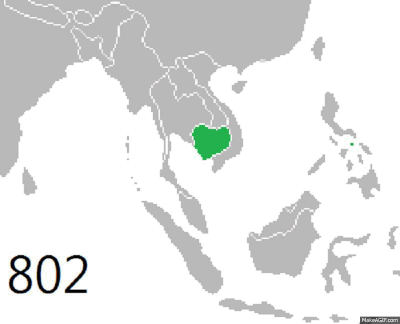
Territorial Evolution of the Khmer Empire
Economy Edit
Edit
The Khmer Empire is the third largest economy on Earth and has a GDP growth of 5%. Its current GDP is 10,000,000,000,000 (in US dollars). If the trend continues, then it will surpass the economy of the United States of America by 2050 and remain at the position of third. The Khmer Empire is a free-market and capitalistic economy. Tourism in an important factor for the economy contributing 15% to the GDP.
Politics Edit
Edit
Government Edit
Edit
The Khmer Empire is an absolute, divine, hereditary and autocratic monarchy. The emperor of the Khmer Empire is worshiped as a demigod, son of the gods and supreme ruler of the empire. Therefore, the Khmer Empire is an autocratic, divine and absolute monarchy where the emperor rules with an iron fist. He and his family reside in the Grand Imperial Palace of Angkor, in the heart of the city. The emperor has infallibility, inviolability and his word is law. Many people have criticized the Khmer Empire for its lack of democracy. The Khmer Empire is one of the few remaining divine monarchies on Earth. Some of the titles that the emperor carries are "His Divineness the Almighty Emperor of the Great Empire of Kampuchea", Divine Emperor of the Empire of Kampuchea, Chakravartin, King of the World, Son of the Gods and Great Ruler of the Khmer People. There has only been one known instance of a reigning woman, her name is Suryavana, she was empress regnant from 1145-1160. The current constitution allows women to ascend the throne. The current emperor is Chakravarman I, he was crowned emperor in 1995 at the age of ten. He is married to Sayrana Suprassana Devi and has one daughter, Sundaravana, who is the current heir to the throne. Most emperors receive a posthumous name and sometimes a nickname. The emperor may appoint governors to exercise his will in the provinces.
Foreign relations Edit
Edit
The Khmer Empire has foreign relations with most countries. It first established relations with Europe when attempts were made to colonize Nusantara. The Khmer Empire repelled any attempt at colonizing and resents Europe for this but has now better relations with Europe. Nusantara is the most trusted ally of the Khmer Empire,they have the same state religions and trade often with each other. At one point the Empire of Nusantara was almost merged with the Khmer Empire, but ultimately it was not realized due to the fact that Empress Tribhuwana rejected the marriage proposal of Emperor Vizalavarman I of the Khmer Empire.
Demographics Edit
Edit
The Khmer Empire is the third most populous nation on Earth with more then 400 million inhabitants and has a current population growth of 2%. The main ethnic group is Khmer, with some minor such as Thai, Lao, Vietnamese and Malay. The main and official language spoken is Khmer. The life expectancy at birth is 75 years (overall). The main religion is Buddhism (95%).
Military Edit
Edit
Due to its position, the Khmer Empire controls some of the important trade routes both on land and sea. Because of this, the Empire maintains one of the largest military in the world, comprising of 1.6 million personnel, and the second largest air power (second only to the US in that regard). The main strength of their military can be seen their naval power. With 23 Sihanouk-class nuclear aircraft carriers and nearly 100 Balean-class nuclear deterrence submarines backed up by state-of-the-art destroyers and battleships, Khmer manages the most powerful Navy to date. Khmer also one of the only few nations that processes nuclear weapons. With the large military budget of 700 billion USD, Khmer obtains the status of the world main superpower.
Geography Edit
Edit
The Khmer Empire is situated in mainland South East Asia. It borders (in clockwise from north) the Empire of China, Empire of Nusantara (overseas), the Mughal Empire and the Empire of Bhutan. The climate in South East Asia is mainly tropical – hot and humid all year round with plentiful rainfall. South East Asia has a wet and dry season caused by seasonal shift in winds or monsoon. The tropical rain belt causes additional rainfall during the monsoon season. The rainforest is the second largest on earth (with the Amazon being the largest). An exception to this type of climate and vegetation is the mountain areas in the northern region, where high altitudes lead to milder temperatures and drier landscape. Other parts fall out of this climate because they are desert-like.
Culture Edit
Edit
Due to its various ethnic groups, the Khmer Empire has many different sorts of cuisines, architecture and music.
Architecture Edit
Edit
The period of the Khmer Empire is the period that began in the ninth century AD. If precise dates are required, the beginning may be set in 802 AD, when the founder of the Khmer Empire, Jayavarman II pronounced himself universal monarch (Chakravartin) and declared independence from Java. Khmer Architecture developed out of Hindu architecture. Khmer architecture is mainly religious. There are many surviving Angkorian Temples with as crown jewel Angkor Wat. But there are non-religious buildings also such as the Imperial Palace of Angkor or the Great Library of Angkor. Angkor Wat and many other Khmer temples were previously covered in gold, but over the course of hundreds of years the gold has faded away. However, the Imperial Palace is still mostly covered in gold due to its monthly maintenance. The Imperial Palace is an enormous palace that was constructed on the orders of Emperor Jayavarman VII in 1270 and completed by his son Vizalavarman I in 1325. The palace complex is one of the largest in the world and covers an area of 4 sq km.
Angkor Wat
Angkor Wat (or Wat Preah Pisnulok in Khmer) is the largest Khmer temple and the largest religious building on Earth. It is the crown jewel of the Khmer Architecture. It was built by Emperor Suryavarman II in honor of the god Vishnu and as his burial place. Today it's a National Shrine visited by many tourists. Only priests and the Imperial Family may enter the temple, except on August 23, Suryavarman II's birthday, then everyone may enter it. The Inner Sanctum, the Holy of Holies, the centre of the Khmer Empire is only accessible to the Emperor and Empress where they pray once a year to the Gods for continuing prosperity in the empire. Entering the Inner Sanctum is sacrilege and the penalty is life imprisonment. There are rumors that there is a secret passage to the Catacombs of Angkor where there are secret treasures and unsolved mysteries. The government has denied this, but scientists have used ground-penetrating radar and it has shown there are, in fact, cavities underneath the city of Angkor and Angkor Wat. Angkor Wat remains shrouded in a mystery and requires further study.
Cuisine Edit
Edit
Khmer cuisine (Khmer: សិល្បៈខាងធ្វើម្ហូបខ្មែរ), or more generally, Kampuchean cuisine is one of the world's oldest living cuisines, and is regarded by many as one of the healthiest and most balanced cuisines on the planet. With an emphasis on simplicity, freshness, seasonality and regionalism – Cambodian food has won praise for its elegant and understated use of spice, its harmonious arrangement of contrasting flavours, textures and temperatures within the overall meal rather than a single dish, and its thoughtful and, at times extravagant presentation of dishes with plenty of herbs, leaves, pickles, dipping sauces, edible flowers and other garnishes and condiments.
Arts
Sculpture Edit
Edit
Khmer sculpture refers to the stone sculpture of the Khmer Empire, which rules mainland South East Asia, from the 9th century. The most celebrated examples are found in Angkor, which serves as the seat of the empire. By the 7th century, Khmer sculpture begins to drift away from its Hindu influences – pre-Gupta for the Buddhist figures, Pallava for the Hindu figures – and through constant stylistic evolution, it comes to develop its own originality, which by the tenth century can be considered complete and absolute. Khmer sculpture soon goes beyond religious representation, which becomes almost a pretext in order to portray court figures in the guise of gods and goddesses. But furthermore, it also comes to constitute a means and end in itself for the execution of stylistic refinement, like a kind of testing ground. We have already seen how the social context of the Khmer kingdom provides a second key to understanding this art. But we can also imagine that on a more exclusive level, small groups of intellectuals and artists were at work, competing among themselves in mastery and refinement as they pursued a hypothetical perfection of style. The gods we find in Khmer sculpture are those of the two great religions of India, Buddhism and Hinduism. Priests supervised the execution of the works, attested to in the high iconographic precision of the sculptures. Nonetheless, unlike those Hindu images which repeat an idealized stereotype, these images are treated with great realism and originality because they depict living models: the king and his court. The true social function of Khmer art was, in fact, the glorification of the aristocracy through these images of the gods embodied in the princes. In fact, the cult of the “deva-raja” required the development of an eminently aristocratic art in which the people were supposed to see the tangible proof of the sovereign’s divinity, while the aristocracy took pleasure in seeing itself – if, it's true, in idealized form – immortalized in the splendour of intricate adornments, elegant dresses and extravagant jewelry. The sculptures are images of a gods, royal and imposing presences with feminine sensuality, giving impressions of figures at the courts with considerable power. The artists who sculpted the stones doubtless satisfied the primary objectives and requisites demanded by the persons who commissioned them. The sculptures represent the chosen divinity in the orthodox manner and succeeds in portraying, with great skill and expertise, high figures of the courts in all of their splendour, in the attire, adornments and jewelry of a sophisticated beauty. But if we go beyond this initial impression, we can pause to observe some of the details of the sculptures, such as the double arc drawn by the eyebrows on the foreheads, evoked below by the wisely sketched curve of the noses and farther down, by the double arc which masterfully outlines the lips and the double chin. Following a hypothetical vertical line down still farther, we find another double arc outlining the breasts, and then, continuing down from the waist all along the skirts and ending in the ankles, we find almost at the bottom, a twisted double arc intended to represent the other side of the skirts. This detail serves, above all, to eliminate a certain hieratic fixedness, which was relatively common in the Khmer statues of lesser quality.
Dance
Cambodian Dance can be divided into three main categories: classical dances, folk dances, and vernacular dances. Khmer classical dance is a form of Cambodian dance originally performed only for royalty. The dances have many elements in common with Thai classical dance. During the mid-20th century, it was introduced to the public where it now remains a celebrated icon of Khmer culture, often being performed during public events, holidays, and for tourists visiting Cambodia.this classical Dance is famous for its using of hands and feet to express emotion which known as there are 4000 different gestures in this type of dance. Provided as repeating a golden age in 1960s, Khmer Classical Dance which know as The Royal Ballet of Cambodia after select as UNESCO's Masterpieces of the Oral and Intangible Heritage of Humanity, has led one of its dance to be a outstanding dance of all for culture and society. Reamker, a Khmer version of Indian, Ramayana had influenced strongly to Khmer classical dance. It involved in Khmer gesture, movement and story line. The dance that divided from Reamker Dance known as Robam Sovann Macha and Robam Moni Mekala. In fact, all of Dance reminded the audience of celestial dance which is an angel or Apsara in Sanskrit mythology in goal of bring the good luck and success to the viewer. The Classical dance is create by the heart of high art as the performer is decorated with themselves with a branches of jewellery. Apsara Dance, a Khmer dance that has survived since the Angkor Era, has been singled out to attract foreign tourists and to make the richness of Khmer culture known to the world. Apsara Dance was promoted by Princess Norodom Buppha Devi before the Khmer Rouge times and recently has received an award as one of the main symbols of Cambodia. Khmer folk dances, which are performed for audiences, are fast-paced. The movements and gestures are not as stylized as Khmer classical dance. Folk dancers wear clothes of the people they are portraying such as Chams, hill tribes, farmers, and peasants. The folk dance music is played by a mahori orchestra. Cambodian vernacular dances (or social dances) are those danced at social gatherings. Such dances include Romvong, Rom Kbach, Rom Saravan, and Lam Leav. Some of these dances have much influence from the traditional dances of Laos. But Rom Kbach, for example, take heavily from the classical dance of the royal court.
Trivia Edit
Edit
- The Khmer Empire had some strange laws introduced by Emperor Vilaksanavarman I (most of these laws are not enforced).
- You may not die if you see a picture of the emperor or empress, that's disloyalty.
- It is illegal to talk to the emperor without permission, to insult the Imperial Family, to touch the Imperial Family or to enter the Palace without invitation. Only the Imperial Family, High Priests and Palace staff may enter it.
- It is illegal to dress up as a member of the Imperial Family, that's mockery.
- It is illegal to overthrow the government without asking permission from the emperor.
- It is illegal to say hello to a tree.
- Everybody must be happy when the emperor is happy.
- It is illegal to fall asleep during a speech by the emperor or empress.
- It is illegal to die without permission of the emperor.
| ||||||||||||||||||||||||||



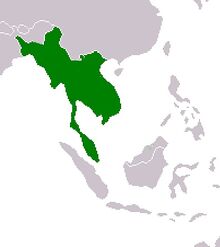




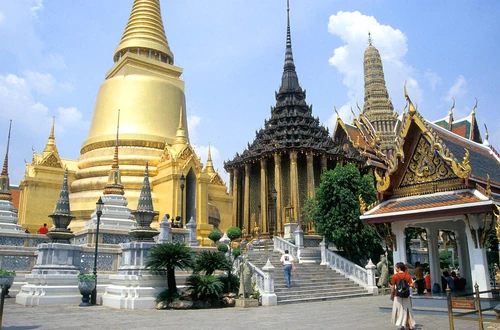
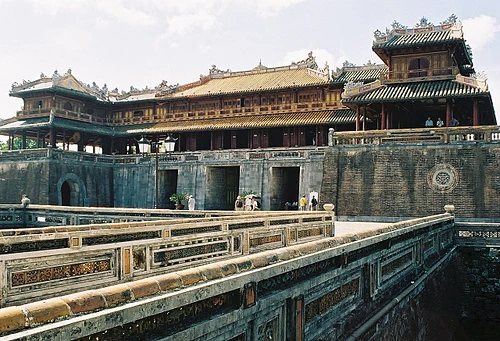

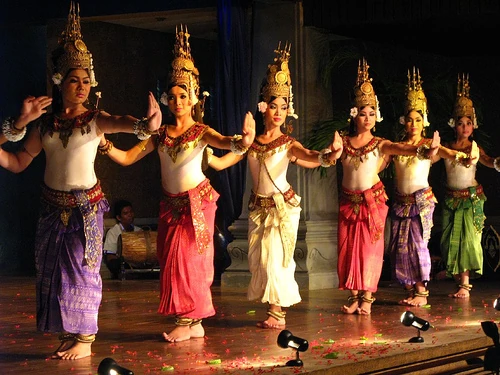


No comments:
Post a Comment